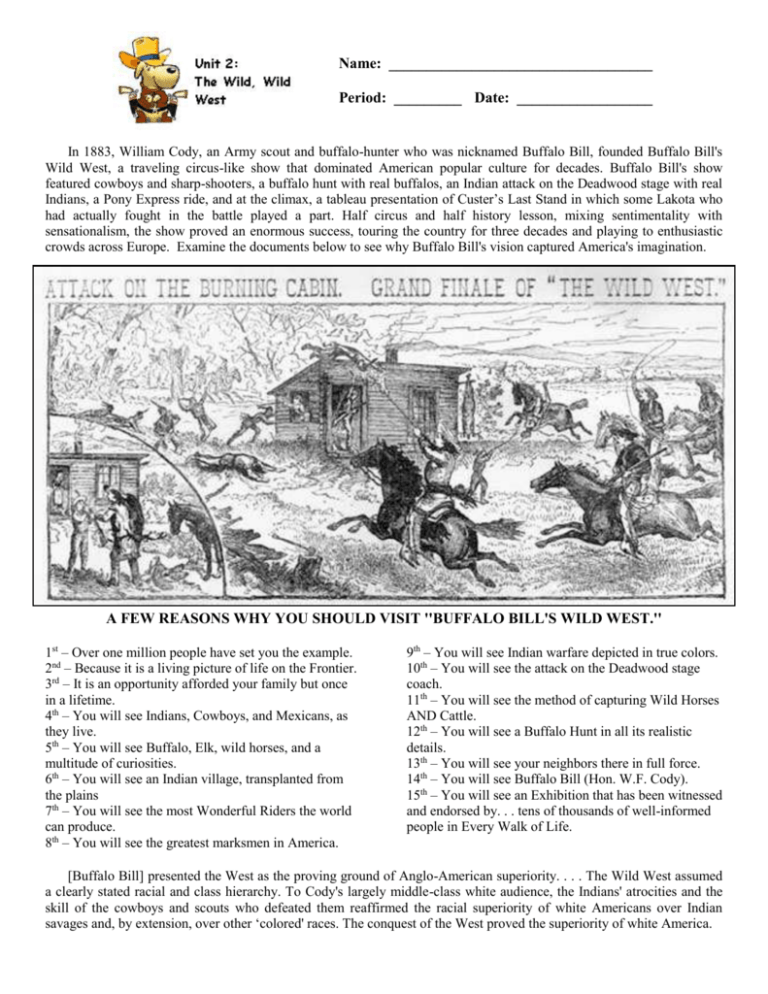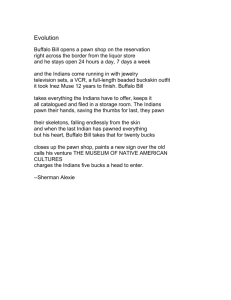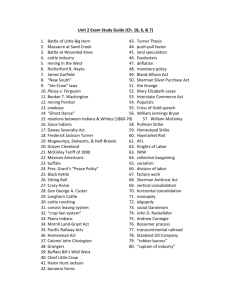wild west show
advertisement

Name: ___________________________________ Period: _________ Date: __________________ In 1883, William Cody, an Army scout and buffalo-hunter who was nicknamed Buffalo Bill, founded Buffalo Bill's Wild West, a traveling circus-like show that dominated American popular culture for decades. Buffalo Bill's show featured cowboys and sharp-shooters, a buffalo hunt with real buffalos, an Indian attack on the Deadwood stage with real Indians, a Pony Express ride, and at the climax, a tableau presentation of Custer’s Last Stand in which some Lakota who had actually fought in the battle played a part. Half circus and half history lesson, mixing sentimentality with sensationalism, the show proved an enormous success, touring the country for three decades and playing to enthusiastic crowds across Europe. Examine the documents below to see why Buffalo Bill's vision captured America's imagination. A FEW REASONS WHY YOU SHOULD VISIT ''BUFFALO BILL'S WILD WEST.'' 1st – Over one million people have set you the example. 2nd – Because it is a living picture of life on the Frontier. 3rd – It is an opportunity afforded your family but once in a lifetime. 4th – You will see Indians, Cowboys, and Mexicans, as they live. 5th – You will see Buffalo, Elk, wild horses, and a multitude of curiosities. 6th – You will see an Indian village, transplanted from the plains 7th – You will see the most Wonderful Riders the world can produce. 8th – You will see the greatest marksmen in America. 9th – You will see Indian warfare depicted in true colors. 10th – You will see the attack on the Deadwood stage coach. 11th – You will see the method of capturing Wild Horses AND Cattle. 12th – You will see a Buffalo Hunt in all its realistic details. 13th – You will see your neighbors there in full force. 14th – You will see Buffalo Bill (Hon. W.F. Cody). 15th – You will see an Exhibition that has been witnessed and endorsed by. . . tens of thousands of well-informed people in Every Walk of Life. [Buffalo Bill] presented the West as the proving ground of Anglo-American superiority. . . . The Wild West assumed a clearly stated racial and class hierarchy. To Cody's largely middle-class white audience, the Indians' atrocities and the skill of the cowboys and scouts who defeated them reaffirmed the racial superiority of white Americans over Indian savages and, by extension, over other ‘colored' races. The conquest of the West proved the superiority of white America. Americans had long memorialized white victimization, virtually ignoring accompanying white atrocities against Indians. Buffallo Bill's Wild West, for example, regularly featured Indian attacks on helpless white settlers but never presented tableaux of white Americans massacring or dispossessing Indians. That was not part of the popular story. The Custer Battlefield became a national monument, the site of the Marias massacre, where U.S. soldiers killed 173 Blackfeet Indians, mostly women and children, in 1870, never even warranted a marker. Western mythologies effectively inverted the story of American conquest. As Richard White [another historian] argues, spectacles like Buffalo Bill's presented the American conquest of the West as a site where whites were victims and Indians aggressors. Questions: 1. Why might people in the 1890’s have been eager to watch reenactments of scenes from the “Wild West?” 2. According to the passage, Buffalo Bill’s show “inverted the story of American conquest.” What does that mean? Though not in the same numbers as men, women participated in ranch life from the start. They raised and herded cattle and rode on the trails. Some women even became notorious cattle rustlers. Yet, the term ''cowgirl'' was first used in the 1890s, as rodeos and Wild West shows created the image of a female sharp-shooter and bronco buster. Annie Oakley was an invention of Buffalo Bill's Wild West, as the passage below explains. Questions: 1. According to the passage, why was Annie Oakley such a popular figure in Buffalo Bill’s show? Give at least two reasons. 2. Why do you think the popular image of a female sharp-shooter or horse rider only emerged in the 1890s?








